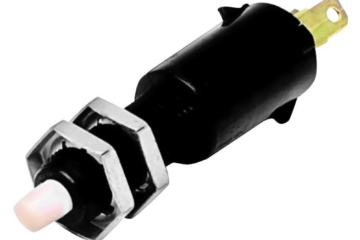Many factors affect the lifespan of your car’s brake system. Unless you live in an area that never sees moisture of sale on the roads, your car’s brake hard lines will age and deteriorate. There’s no way around it. Time, weather, and how much use and maintenance your brake system sees will all contribute to how long parts will last. Eventually, you’ll need to get around to replacing parts if you want your car to continue stopping reliably.
Rubber hoses and calipers are easy enough to replace. Even your brake master cylinder is a pretty straightforward item. But, what if you spring a leak in a brake hard line? Thankfully, this is something you can deal with on your own. Replacing hard lines comes with its own set of challenges, though.
Unlike other parts of your brake system, the hard lines may not be an off-the-shelf replacement item. The steel lines in your brake system are bent a very specific way to route the brake fluid from the master cylinder to the calipers. The brake fluid itself doesn’t care how it bends and curves through the system; the lines are routed to avoid coming into contact with other items underneath your car. In some cases, you may be able to buy pre-bent replacements. However, in a lot of cases, you may need to fabricate your own replacement pieces.
If you can’t find exact replacements, you’re going to need to make new ones yourself. The process isn’t all that complicated. First, you’re going to need to know the diameter of the brake lines in your car. If you’re not sure, and you already have a confirmed leak, you can cut out a section from near the leak and take it out for measuring. The next thing you’re going to need to know is what kind of flares the lines in your car have. You’re going to either have single-flared (also called bubble flare) or double-flared lines. When replacing lines, you’re going to want the new flares to match the old ones.
Once you’ve determined the diameter of the lines and the type of flare, you’re going to need to get new lines. Replacement brake line comes in a variety of lengths. Measure the section you need to replace and get a piece in the appropriate length. Be sure to purchase or borrow the appropriate tools, also. You’re going to need a brake tubing bender as well as a brake line cutting tool and a flaring tool. Also be sure to pick up some junctions to you can splice into the old lines. Before you do anything else, make a few practice cuts and flares with the new line. When you’re confident in your technique, cut out the bad section of brake line, bend a new piece to match the shape of the old piece, and splice it in. Once that’s done, bleed the lines with fresh brake fluid, and you should be good to go.



